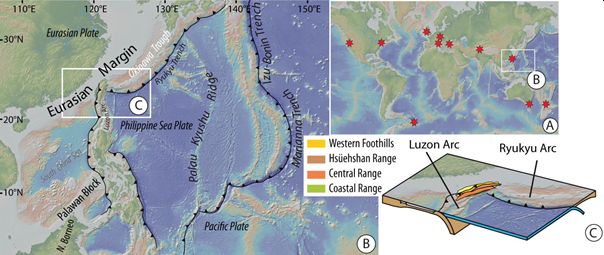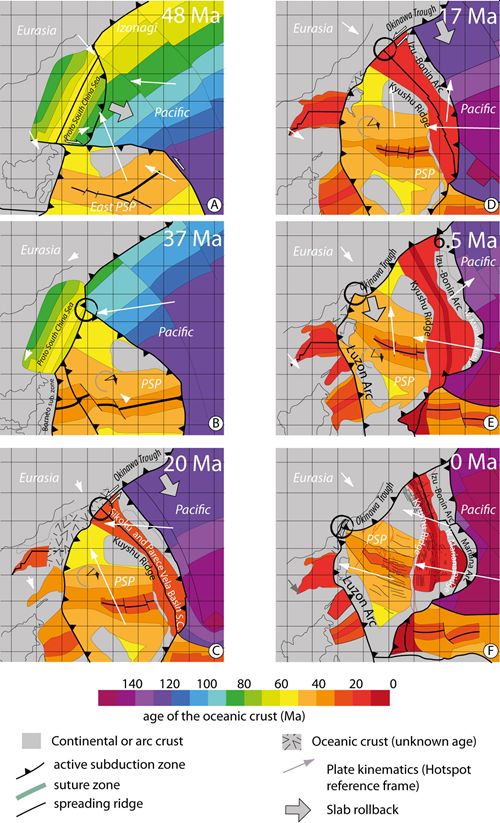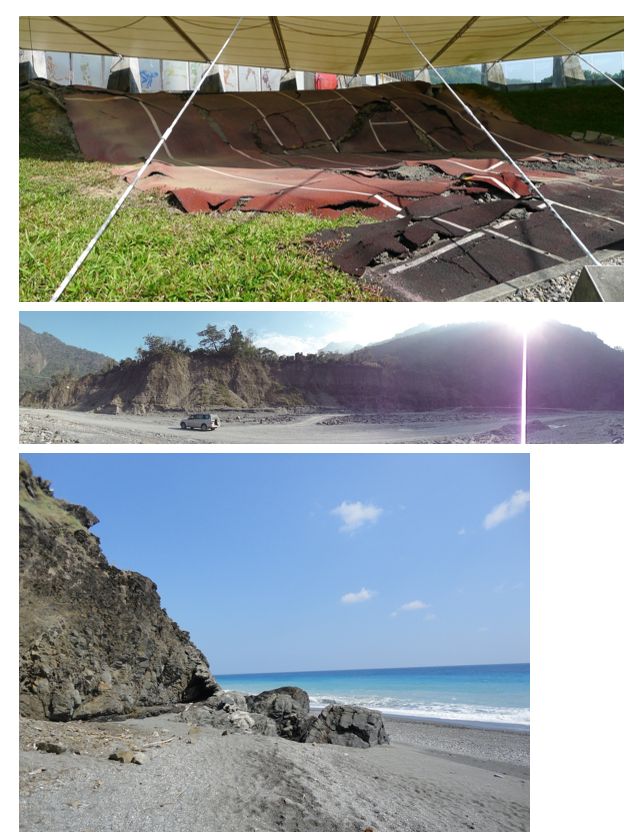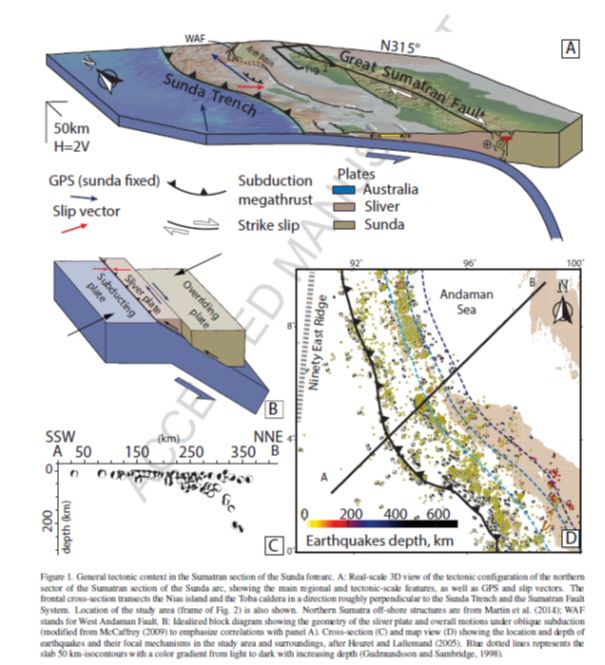S-to-C: From Subduction to Collision
PI: Christoph v.Hagke
In this series of studies we investigate the geometry and kinematic evolution of subduction zones. Geological field mapping in combination with plate tectonic reconstructions show strain partitioning in subduction zones, as well as kinematics of subduction polarity reversals.
We use results of these studies to address subduction polarity reversals in general, and in the European Alps in particular in the framework of the DFG funded Priority Program “Mountain Building Processes in 4-D” (http://www.spp-mountainbuilding.de/)

Figure 1. A: Compilation of areas where subduction polarity reversals have been conjectured in ancient orogens. B: Geodynamic map of SE Asia showing Taiwan standing at the junction of two oppositely dipping subduction zones. Taiwan is the result of collision between the Philippine Sea Plate and the Eurasian Plate. C: Structural map of Taiwan and plate configuration. Costal Ranges are the part of the Luzon Arc that has been accreted to Eurasia. Topographic maps from GeoMapApp (Ryan et al., 2009).

Figure 2. Tectonic reconstructions of southeast Asia. Subduction polarity reversal induced by the motion (northward migration combined with rotation) of the Philippine Sea Plate in three stages. A) 48 Ma: the Philippine Sea Plate is the upper plate of the Borneo subduction zone. At its southern tip it gets juxtaposed against young, buoyant crust of the Philippine Sea Plate. Initially connected by a strike slip zone, subduction initiates in a NW-ward direction B) 37 Ma: the Proto South China Sea is consumed below the Philippine Sea Plate. This motion together with rotation of the plate causes migration of the polarity reversal. At 35 Ma the South China Sea starts spreading. C) 20 Ma: Rotation of the Philippine Sea Plate has stopped, and polarity reversal is not moving northwards anymore. Spreading between the Kyushu Ridge and the West Mariana Ridge is accommodated along a strike slip fault. D) 17 Ma: Subduction initiates along the strike slip zone, and the Okinawa Trough extends westwards; E) 6.5 Ma: Collision starts in Central Taiwan, the Pacific Plate rolls back rapidly; F) At present day, the rollback of the subduction has reached the Eurasian margin, and interacts with mountain building in Taiwan.
Taiwan field impressions


Further Reading:
von Hagke, C., Philippon, M., Avouac, J.-P., Gurnis, M. (2016): Origin and time evolution of subduction polarity reversal from plate kinematics of Southeast Asia, Geology v. 44, p. 659-662
Fernandez-Blanco, D., Philippon, M., von Hagke, C. (2016), Structure and kinematics of the Great Sumatran Fault in North Sumatra (Indonesia), Tectonophysics, 693, pp.453-464




